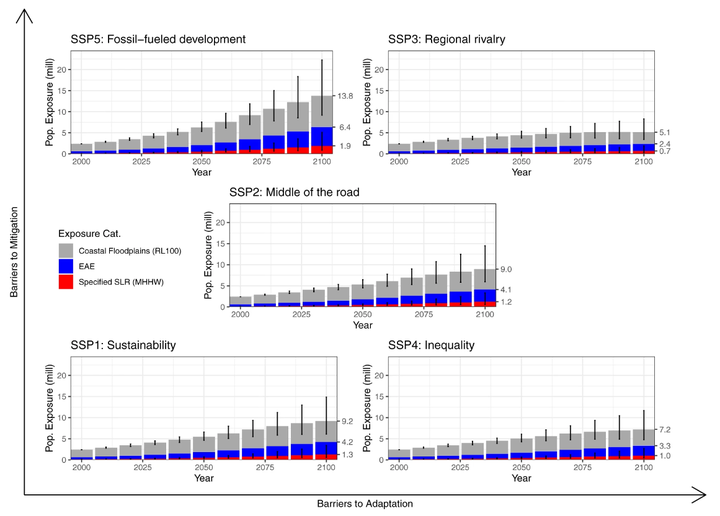Assessing population exposure to coastal flooding due to sea level rise

Abstract
The exposure of populations to sea-level rise (SLR) is a leading indicator assessing the impact of future climate change on coastal regions. SLR exposes coastal populations to a spectrum of impacts with broad spatial and temporal heterogeneity, but exposure assessments often narrowly define the spatial zone of flooding. Here we show how choice of zone results in differential exposure estimates across space and time. Further, we apply a spatio-temporal flood-modeling approach that integrates across these spatial zones to assess the annual probability of population exposure. We apply our model to the coastal United States to demonstrate a more robust assessment of population exposure to flooding from SLR in any given year. Our results suggest that more explicit decisions regarding spatial zone (and associated temporal implication) will improve adaptation planning and policies by indicating the relative chance and magnitude of coastal populations to be affected by future SLR.